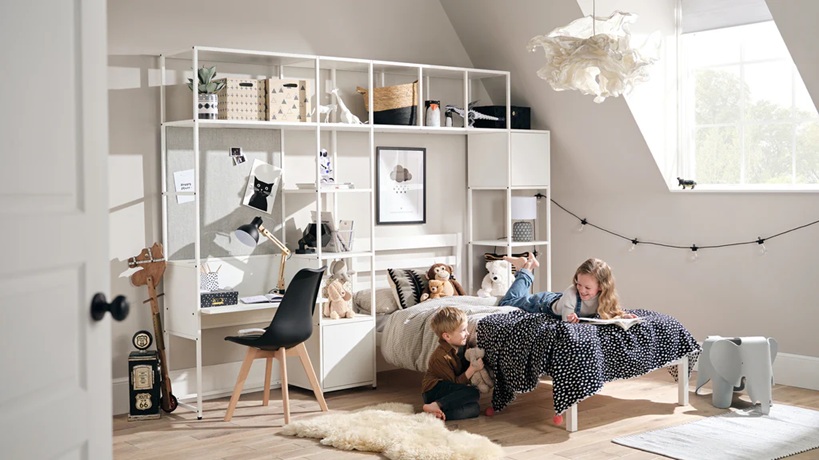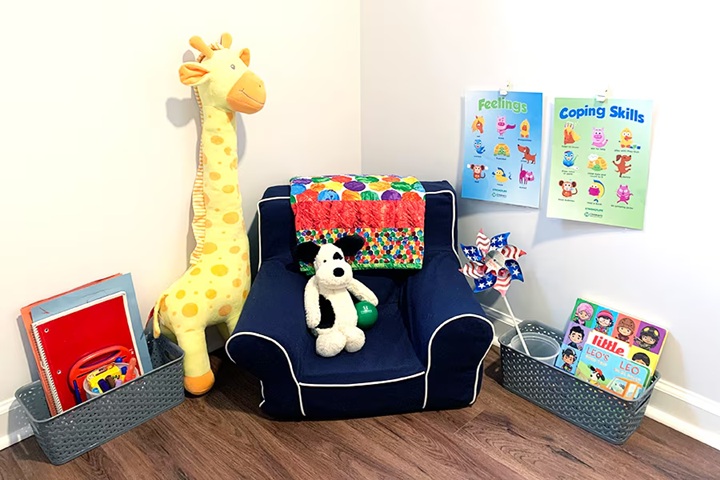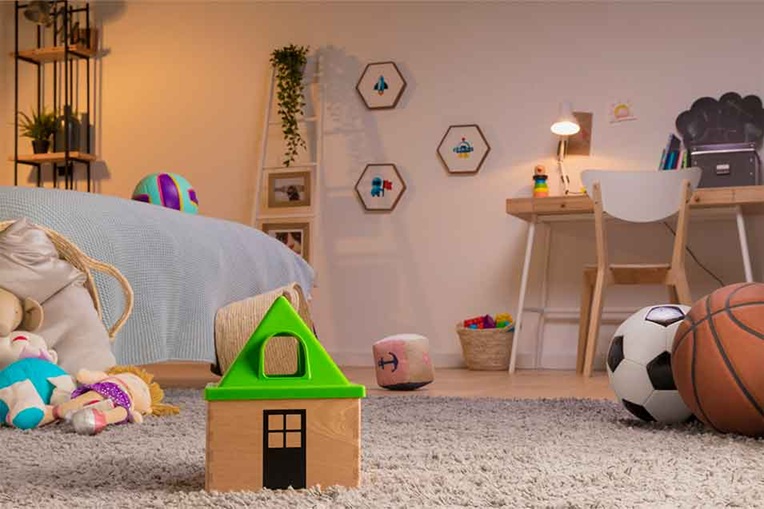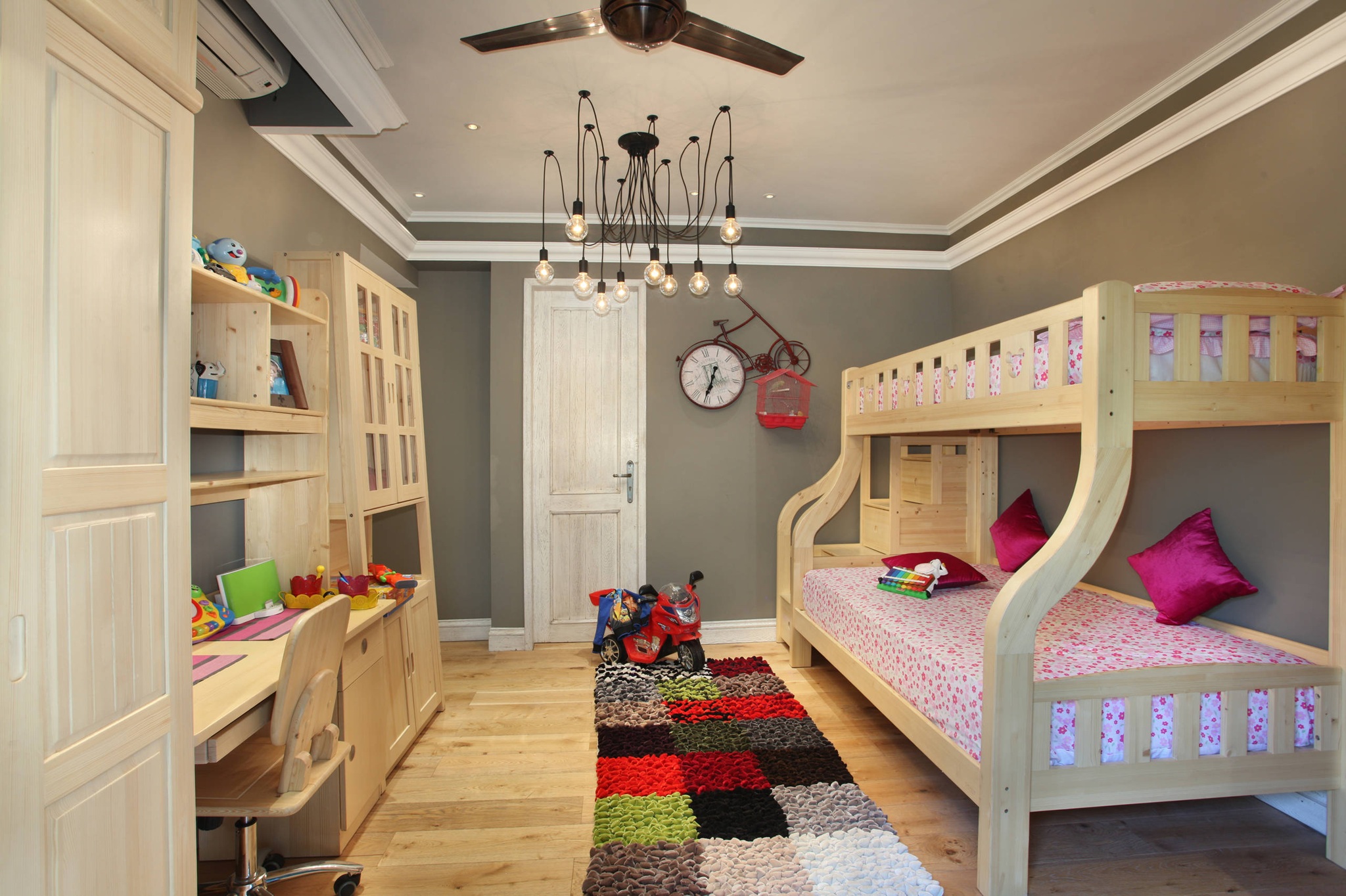Keeping a child’s room organized can feel like a constant battle, with toys, books, and clothes taking over seemingly every corner. The trick? Storage solutions that are both fun and functional. Cleverly designed storage helps keep spaces tidy while giving kids a sense of ownership and independence in managing their belongings. Plus, it can add a playful and stylish touch to the room’s decor.
Here’s how to design practical storage for kids that encourages organization without sacrificing fun.
-
Make Storage Playful
Kids are naturally drawn to things that feel fun and interactive, so why not turn storage into part of the play? Think of storage not just as a necessity but as an opportunity to add personality to the room.
Ideas to Inspire You:
Themed Storage Bins: Use bins shaped like animals, cars, or favorite characters. Fabric bins with cute prints also add a decorative touch.
Toy Chests with a Twist: Choose a bright, colorful chest shaped like a treasure box or a LEGO block to store smaller toys.
Stackable Storage Cubes: Brightly colored cubes can double as building blocks while keeping toys organized.
By making storage part of the fun, cleanup time feels less like a chore and more like a game.
-
Size Matters
For kids to stay organized, storage solutions should be designed for their size and reach. Low, accessible storage encourages independence because kids can retrieve and put away their belongings without needing help.
Tips for Kid-Friendly Sizing:
Low Shelving: Install shelves at kid-height to store books, puzzles, and toys. This creates a sense of ownership while also making cleanup easier.
Cubbies and Baskets: Use open cubbies paired with labeled baskets to organize items. Labels with pictures or colors instead of words work well for younger kids.
Hooks and Pegboards: Mount hooks or a pegboard at their level for coats, bags, or accessories.
When storage is easy to access, kids are more likely to help keep things in order.
-
Think Multi-Functional
When space is at a premium, multi-functional furniture is a lifesaver. Storage that doubles as seating, sleeping, or a play space makes the most of small rooms.
Multi-Functional Must-Haves:
Beds with Built-In Storage: Choose a captain’s bed or loft bed with drawers or shelves underneath for clothes and toys.
Storage Ottomans: These provide extra seating while hiding clutter inside.
Play Tables with Hidden Compartments: Keep art supplies or small toys tucked away out of sight but still within easy reach.
Dual-purpose furniture makes it easy to maximize storage without crowding the room.

-
Use the Walls
Floor space is often limited in kids’ rooms, but walls offer endless opportunities for creative storage.
Wall Storage Solutions:
Floating Shelves: Display books and decor items on floating shelves that double as functional art.
Hanging Organizers: Use over-the-door or wall-mounted organizers for items like shoes, craft supplies, or hair accessories.
Pocket Shelves: These are great for storing books with the covers facing out, making it easier for kids to choose a favorite story.
Vertical storage not only saves space but also keeps things organized and off the floor.
-
Add a Personal Touch
Personalizing storage can make kids more excited to use it. Incorporating their favorite colors, patterns, or interests ties the storage solutions to their unique personality.
Customization Ideas:
Decorate Bins or Boxes: Use stickers, decals, or paint to give plain storage items a fun makeover.
Name Labels: Personalize drawers, baskets, or lockers with their name for a sense of ownership.
Chalkboard Panels: Add chalkboard paint to the side of cabinets or bins for kids to draw or label their own storage.
When kids feel a personal connection to their space, they’re more likely to keep it tidy.
-
Stay Flexible
Kids outgrow things quickly, and their storage needs will change as they do. Choose storage solutions that can adapt over time.
Examples of Flexible Storage:
Modular Systems: Look for systems that can grow with your child, like stackable bins or adjustable shelving.
Rollaway Bins: Add wheels to storage containers so they can move from playroom to bedroom as needed.
Neutral Colors: Opt for storage items in neutral tones that transition easily from a toddler room to a teen hangout.
Investing in adaptable solutions saves you from frequent overhauls as your child’s needs evolve.
Final Thoughts
Designing fun and functional storage for kids is all about finding creative ways to make cleanup playful, accessible, and stylish. By combining practical furniture, engaging decor, and clever organization hacks, you can transform a chaotic room into a space your child loves to keep tidy.
With the right mindset and materials, you’ll not only gain a clutter-free home but also teach your child valuable skills in organization and responsibility. It’s a win-win for everyone!




